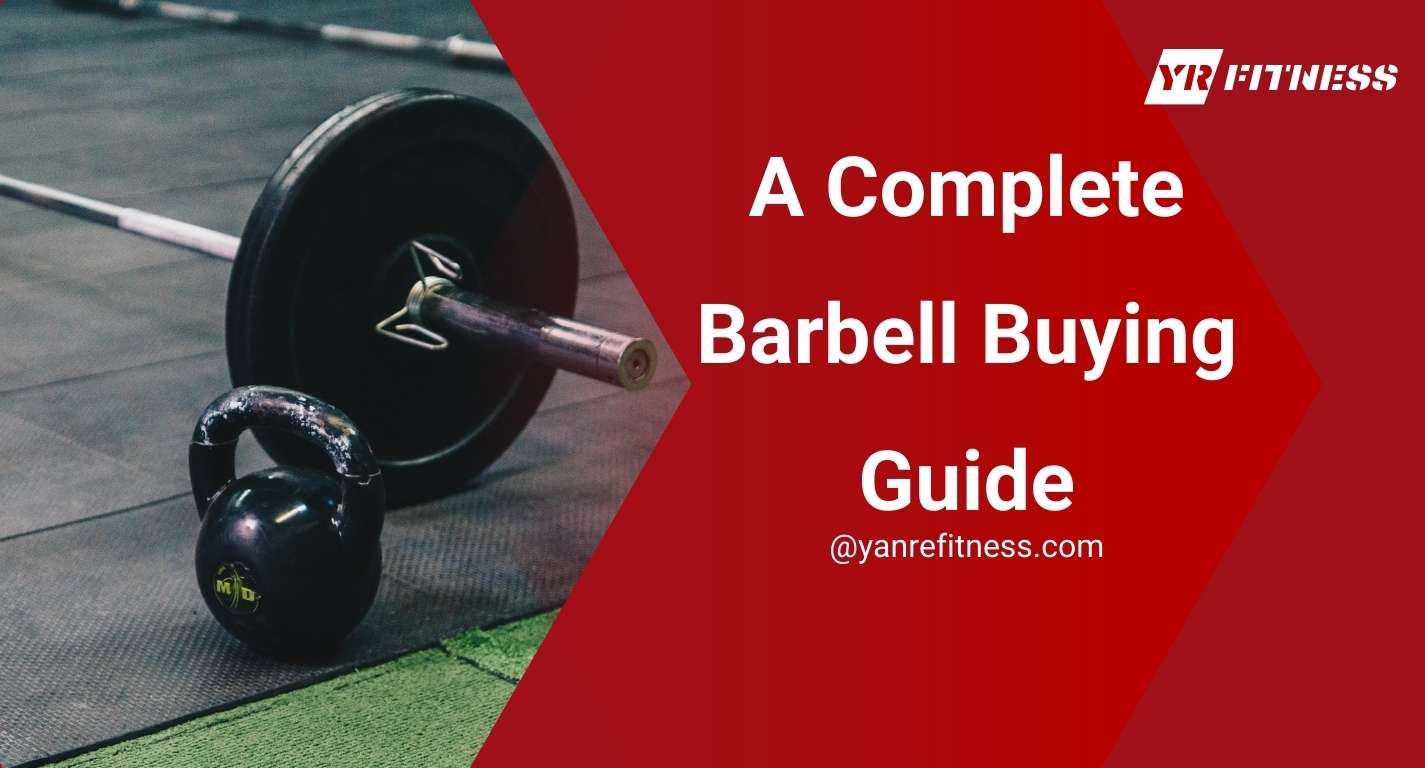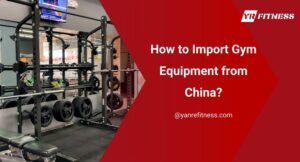Are you struggling to choose the best barbells for your gym? Selecting the right barbells can make a big difference in your members’ performance and satisfaction.
As a gym owner, I know that investing in quality equipment is crucial for a successful gym. I will give advice that goes beyond the basics and guidance that’s based on my real industry experience.
Barbells are a key part of strength training in any gym. The right barbell can improve workouts and last a long time, making it a smart investment.
In this guide, you’ll learn about the different types of barbells, the materials they’re made from, and how to choose the right ones for your gym’s needs.
Let’s dive in!
Table of Contents
1. Quick Comparison Chart
When selecting a barbell, it’s essential to compare the various options available. Each type is designed for specific training goals and has unique features. Partnering with a trusted commercial gym equipment manufacturer can help ensure you’re investing in high-quality barbells tailored to your facility’s needs. To help you choose, the table below highlights key differences between popular barbell types:
Feature | Standard Barbell | Olympic Barbell | Powerlifting Barbell | EZ Curl Barbell |
Length | 5-6 feet | 7 feet | 7 feet | 4-5 feet |
Diameter | 1 inch | 2 inches | 2 inches | 1-2 inches |
Weight | 15-25 lbs | 44 lbs (20 kg) | 44 lbs (20 kg) | 10-20 lbs |
Load Capacity | 100-200 lbs | 1,000-1,500 lbs | 1,500-2,000+ lbs | 100-200 lbs |
Knurling | Minimal or None | Moderate, with center knurl | Aggressive, with center knurl | None or Minimal |
Best For | General Fitness, Light Lifting | Olympic Lifting (Snatch, Clean & Jerk) | Powerlifting (Squat, Deadlift, Bench Press) | Arm Isolation Movements (Biceps, Triceps) |
Price Range | $50-$150 | $150-$400 | $200-$500 | $30-$100 |
Choosing the right barbell is essential for maximizing performance and safety in your gym. YR Fitness specializes in manufacturing high-quality barbells designed for every training style, from powerlifting to Olympic lifting. Contact us today to explore our full range of commercial-grade barbells tailored to your facility’s needs.
2. Barbell Industry Region
The main places in China where barbells are made are Hebei, Nantong, Qingdao, and Tianjin. In Hebei, most barbells are sold to the Zhejiang Yiwu Wholesale Market. The quality of barbells from this region is not very high. The raw materials are often not heat-treated and are nickel-plated, making these barbells rough, cheap, and low quality.
A few companies, like Zhang Kong and DHS Sports, can even make competition-grade barbells. Each year, about 200,000-300,000 high-end barbells are sold worldwide. Around 80,000 of these are bought from China. Seems like that this country contribute a lot to the increasing demand of barbell that has a CAGR of 12.2%, as per VMR.
Understanding where and how barbells are made is crucial when investing in quality gym equipment. YR Fitness ensures top-tier manufacturing standards and reliable materials for barbells that perform under pressure. Talk to us if you’d like guidance on sourcing the best equipment for your gym and avoiding common industry pitfalls.
3. Different Bar Types
There are several types of barbells, each suited for different exercises and user preferences. I guess knowing the specifications of each bar type according to the user and by function will help you make the best choice for your gym.
Bar Type by User
When it comes to choosing the right bar for a gym, understanding each bar types is essential. Different bar types serve a specific purpose and offer unique benefits.
Women’s Bar
A women’s bar is specifically designed with female athletes in mind, offering a slightly lighter weight and a smaller diameter for easier grip. It provides a comfortable and practical solution for a wide range of training exercises.
Specs:
- Total Length: 2.01 m
- Diameter: 25 mm
- Net Weight: 15 kg
- Center Knurling: Yes
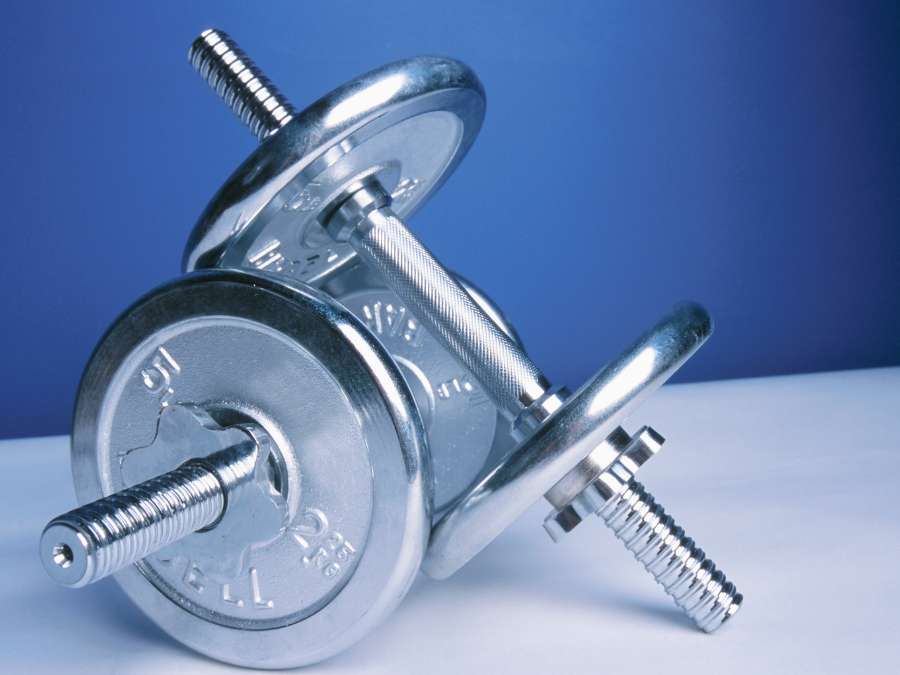
Men’s Bar
A men’s bar is the standard barbell used in most weightlifting settings, designed to handle heavier loads and more intense training sessions. With a thicker diameter and higher weight capacity, it suits the needs of experienced athletes.
Specs:
- Total Length: 2.2 m
- Diameter: 28 mm
- Net Weight: 20 kg
- Center Knurling: Yes
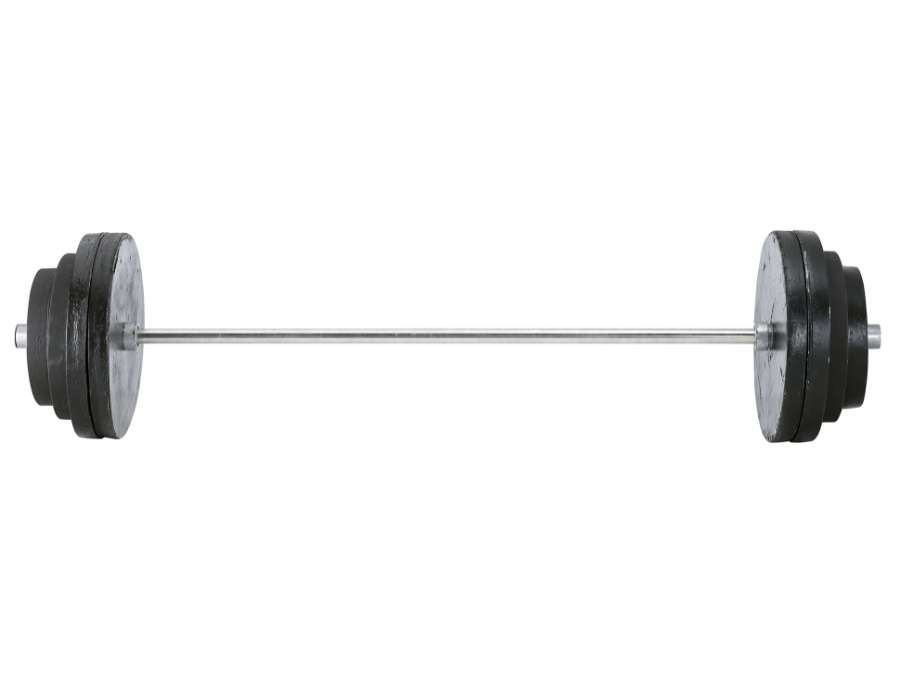
Junior Bar
A junior bar is designed for younger athletes or beginners who are just starting their strength training journey. It offers a lighter option with a smaller diameter, making it easier for newcomers to practice proper form and technique. The total length of each brand may differ, but the length between the sleeves is fixed at 1,310 mm to maintain the correct grip habit.
Specs:
- Total Length: 1.7 m
- Diameter: 25 mm
- Net Weight: 10 kg
- Center Knurling: No
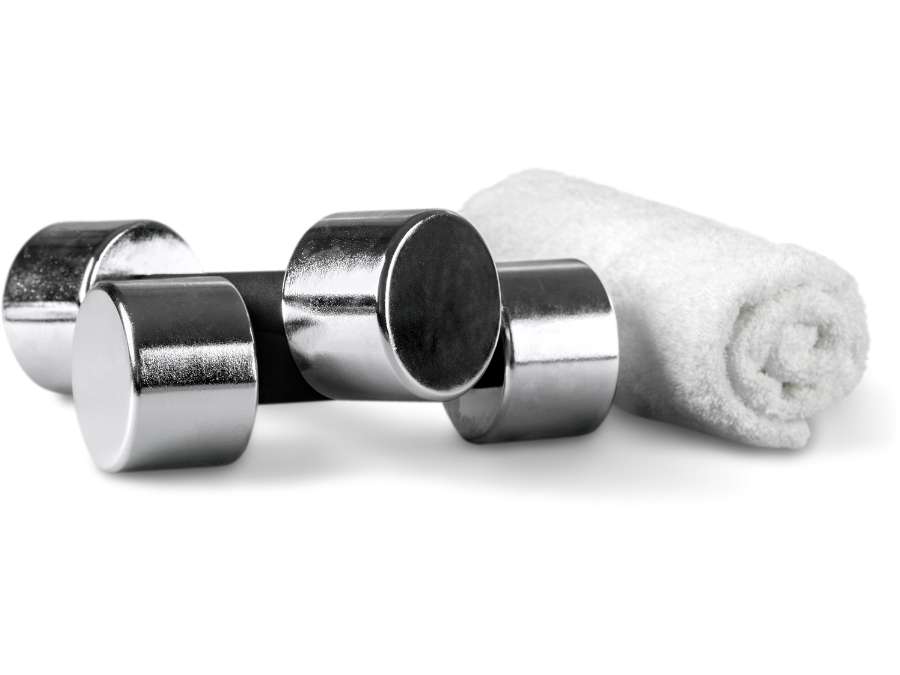
Bar Types By Function
Barbells come in various types, each serving a specific function to accommodate different training styles and exercises. Choosing the right barbell based on its function can improve performance and safety during workouts.
Olympic Bar/Weightlifting Bar
These bars were originally created for Olympic competitions but are now common in most gyms. These bars need to have a good amount of whip, which allows for flexibility when lifting. A rotatable sleeve is also important, as it helps reduce wrist strain during exercises.
Specs:
- Total Length: 2.2 m
- Diameter: 28 mm
- Net Weight: 20 kg
- Center Knurling: No
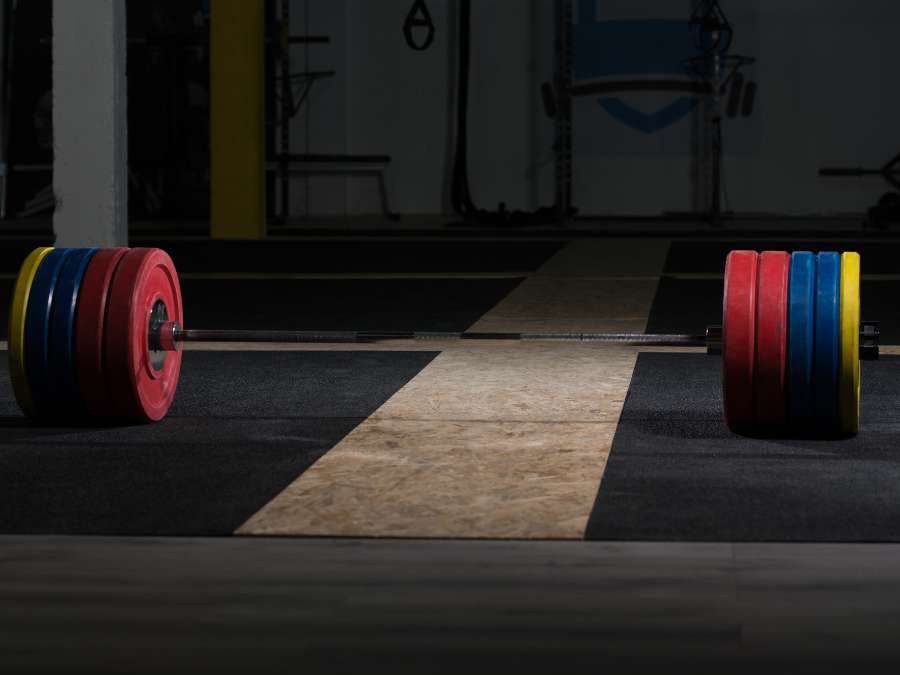
Powerlifting Bar
Powerlifting bars are thicker and stronger than Olympic bars, making them more rigid with no whip. They have aggressive knurling for a firm grip and a central knurl to help with positioning. This bar type is ideal for heavy, controlled lifts, such as bench presses and squats, where stability is crucial.
Specs:
- Total Length: 2.2 m
- Diameter: 29 mm
- Net Weight: 20 kg
- Center Knurling: Yes
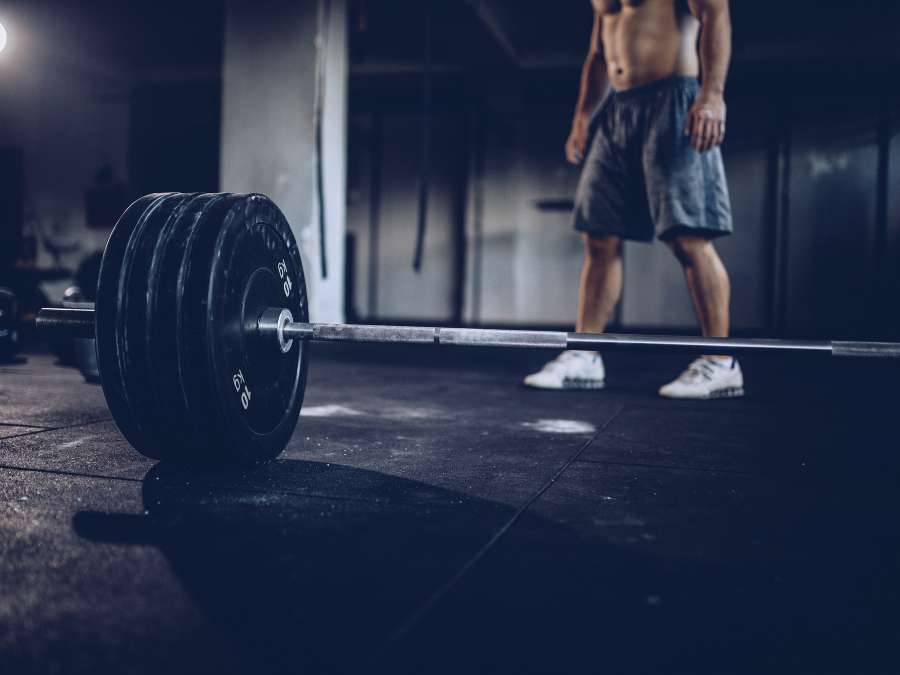
Deadlifting Bar
Deadlifting bars are longer and thinner, with a softer shaft that allows for higher load capacity. And the best part is they feature aggressive outer knurling for better grip but have no center knurl. The bar’s design makes it easier to lift heavier weights without worrying about whip or rotation.
Specs:
- Total Length: 2.3 m
- Diameter: 27 mm
- Net Weight: 20 kg
- Center Knurling: No
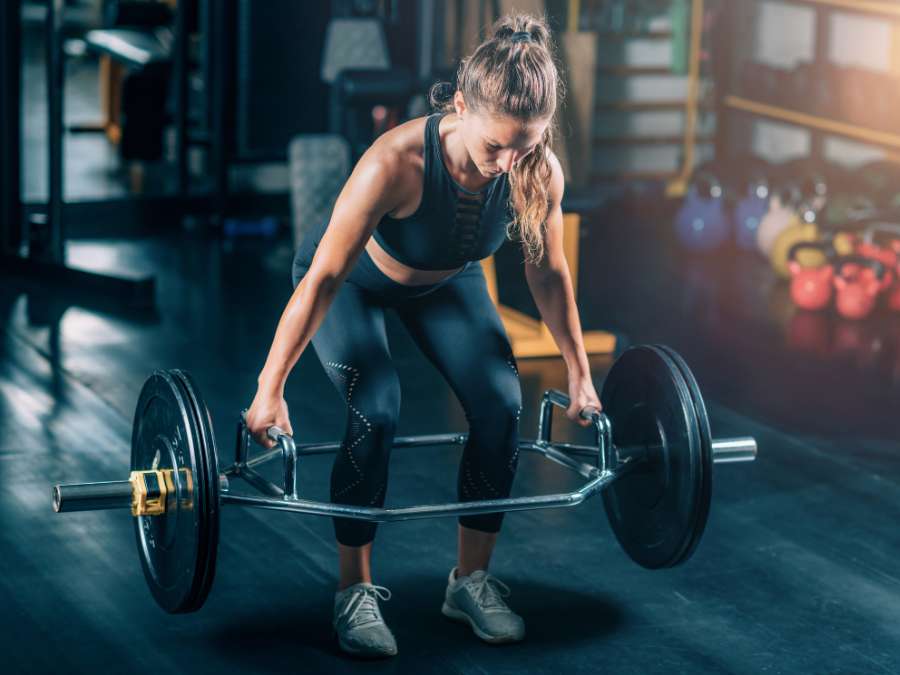
Squat Bar
The squat bar is specifically made for squats, with central knurling that helps the bar stay in place on the shoulders. It has a thicker diameter and higher load capacity, making it more durable. The squat bar is designed with no whip or rotation, ensuring a stable lift.
Specs
- Total Length: 2.4 m
- Diameter: 32 mm
- Net Weight: 25 kg
- Center Knurling: Yes
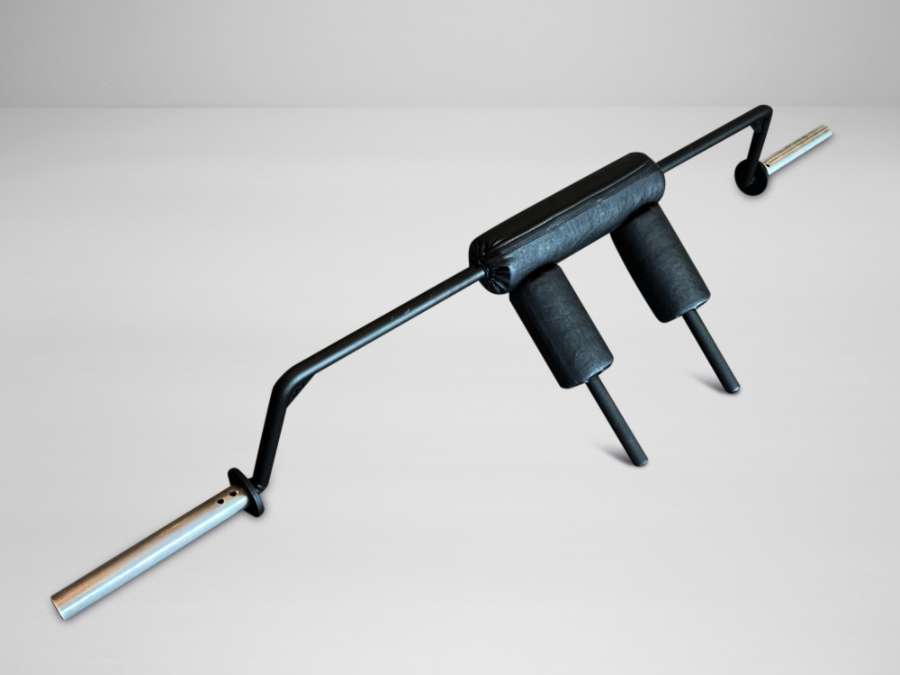
Multi-Purpose Bar
The multi-purpose bar is a versatile option that combines features of both powerlifting and Olympic bars. It typically has 2 types of knurling marks but no center knurl. This bar provides moderate whip and rotation, making it suitable for a variety of exercises, while being cost-effective for gyms.
Specs
- Total Length: 2.2 m
- Diameter: 28-29 mm
- Net Weight: 20 kg
- Center Knurling: No (mostly)
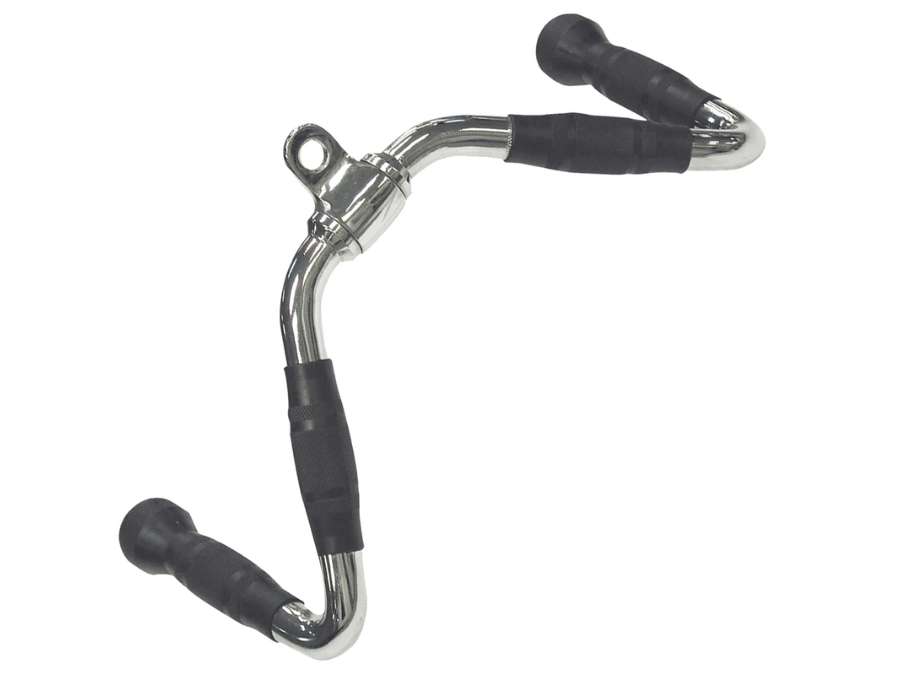
Selecting the perfect barbell type can elevate your training programs and improve member satisfaction. YR Fitness manufactures a comprehensive range of barbells, including specialized options for men, women, and juniors. Speak with us to find out which bars best suit your gym’s unique needs and training styles.
4. Barbell Physical Structure
The physical structure of a barbell plays a crucial role in how it performs during lifts. Understanding the different components of a barbell helps gym owners select the right equipment for their gym.
Sleeve
The sleeve is where the weight plates are loaded. The sleeve’s length determines how much weight can be added, while its design impacts rotation. Between the bar and sleeve, bushings or bearings are used to allow smooth rotation during lifts. Here are the key components of sleeve:
Bushing
There are different types of bushings used in barbells, each offering unique benefits. They help reduce friction between the bar and sleeve, allowing the bar to rotate smoothly. Here are the most common types:
- Typical Bushing: Most barbells use typical bushings, which are made from brass or bronze. These bushings reduce friction and last a long time. Brass bushings are self-lubricating, which makes them low maintenance and suitable for regular gym use.
- Olite Bushing: Made from porous bronze and contain oil, which lubricates the bar as it rotates. They offer better durability and performance compared to regular bushings. Olite bushings are often used in higher-quality barbells because of their ability to handle heavy loads with less maintenance.
- Composite Bushing: It is made from durable plastic materials. They are stronger and last longer than metal bushings. When tested, composite bushings provide a more even and consistent rotation, making them a reliable option for long-term use in high-performance barbells.
Bearing
Bearings are used in barbells to provide smoother, quieter, and more stable rotation. As a matter of fact, they help reduce friction between the bar and the sleeve, allowing for better control during heavy lifts. Most barbells have 8 to 10 bearings, but the quality and type of lubricant matter more than the number of bearings. Professional lifters often prefer barbells with bearings because they perform better under heavy loads. Here are 3 types of bearings:
- Ball Bearings: These are the most basic type of bearing but can be slightly noisier than others.
- Thrust Bearings: These offer better rotation and are quieter than ball bearings.
- Needle Bearings: These are the highest quality and offer the smoothest and quietest rotation, often found in high-end barbells.
Sleeve Design
The sleeve design refers to how the sleeve is attached to the bar. There are 3 methods: snap ring, end cap, and hex bolt. Snap rings and end caps are safe and reliable, while hex bolts are less secure and often used in lower-quality bars.
Shaft
The shaft is the main part of the barbell that lifters grip during exercises. It’s made from strong materials like steel and is designed to withstand heavy loads without bending. The knurling on the shaft provides grip, while its flexibility (or whip) varies depending on the type of bar. Below are the key components of shaft:
Raw Barbell Materials
Most barbells are made from steel, with the specific type of steel affecting the bar’s strength and durability. High-end barbells are typically made from stainless steel. Common raw materials used for barbells include:
- A3 steel
- 45 steel
- Alloy steel
- Low-end spring steel
- High-end spring steel
Knurling
Knurling refers to the textured area on the barbell shaft, which is cut by a machine to improve grip. According to the International Weightlifting Federation (IWF) and the International Powerlifting Federation (IPF), men’s 20kg bars must have central knurling. However, for women’s 15kg barbells, the IWF specifies that there should be no central knurling. Here are other key aspects of knurling:
- Knurling Position: On a standard Olympic bar, the shaft measures 131 cm in length. Besides the two 15 cm smooth sections at each end and two 5 mm-wide rings or marks, the remaining areas of the shaft should be knurled to provide grip.
- Knurling Depth: Knurling depth typically ranges from 0.35 mm to 0.5 mm, though the design and feel can vary. High-quality barbells strike a balance between too much (positive) and too little (negative) knurling. Similar to sandpaper, different knurling provides different levels of grip. Insufficient knurling can make it hard to hold the bar, causing grip failure, while overly aggressive knurling may scratch or cut the palms.
- Knurling Border: Knurling borders have become a recent trend in barbell manufacturing. These raised lines are visually appealing and often promoted as a sign of quality. However, they can weaken the barbell’s steel. The cutting involved in creating these borders introduces stress points, making steel more vulnerable. This issue becomes more significant as the tensile strength of the bar increases, potentially compromising the barbell’s durability.
- Knurling Types:
- Type 1: Sharp Diamond Projections: This knurling type features small, sharp projections that dig into the skin of the palm for a tighter grip. While this helps secure the bar in the palm, it can also cause skin tears as the bar turns in the hand. Additionally, when deadlifting, the bar’s closer contact with the body increases the chance of shin abrasions.
- Type 2: Flat Diamond Design: The flat diamond design is less aggressive and reduces the risk of tearing the skin or scraping the shins. However, with less sharpness, there is also less friction, which can result in a less secure grip compared to sharper knurling.
- Type 3: Concave Diamond Design: This design features concave diamonds that press the skin into the knurling, increasing friction for a closer grip. The lack of sharp edges reduces the chance of skin tears and shin scrapes. This design spreads the stress more evenly, making it more comfortable and popular among gym users.
Finish
When discussing the finish of a barbell, we’re referring to the treatment of both the shaft and sleeve. At YR Fitness, we applyhard chrome to all our barbells, meeting competition standards. You can expect the finish to last at least 12 months. Always ask about the barbell’s finish before purchasing to ensure durability. Here are the 10 most common finish treatments:
- Bare Steel: Bare steel looks and feels great initially, but it rusts quickly without proper care. Regular oiling, wiping off sweat, and storing in a temperature-controlled environment can help prevent rust. Over time, a bare steel bar will develop a natural patina and offer a solid grip.
- Black Oxidation: This finish gives the bar a “bare steel” feel with some rust protection, but it’s limited. It requires the same maintenance as bare steel, such as oiling and wiping down after use, to prevent rust.
- Black Manganate Phosphating: This finish gives the bar a matte black appearance and better rust protection than black oxidation. It’s a chemical process that blackens the steel. The finish may scrape but won’t peel, though rust can occur if not maintained properly.
- Black Zinc: Black zinc adds resistance to the steel and prevents water from causing rust. However, it wears out quickly and becomes smooth when hands are sweaty. Over time, the finish may turn green if not maintained regularly.
- Hard Chrome: Hard chrome, available in polished or satin finishes, is the most durable and expensive option. It’s commonly used on competition barbells and can last over 20 years. However, it may feel slippery, and high-quality knurling is needed to offset this.
- Decorative Chrome: This is a cheaper imitation chrome used on low-quality barbells. It tends to break or peel easily and rusts quickly. If the bar bends, the finish will crack.
- Nickel Plating: Nickel plating provides a classic look but is prone to peeling more easily than hard chrome. It’s often found on lower-quality bars to give the appearance of a premium finish.
- Bright Zinc: Bright zinc has a shiny, chrome-like look but offers a more cost-effective alternative to hard chrome. It provides good rust protection in humid environments but will turn gray over time as it sacrifices itself to protect the steel beneath.
- Cerakote: Cerakote is a durable colored ceramic finish, often used on guns. It’s strong and offers good rust protection, but it’s more expensive than most other finishes.
- E-coat: E-coat is an electronic coating offering excellent rust and oxidation resistance. It’s cheaper than black zinc and better for the environment, complying with safety standards like Rohs, OSHA, and EPA. It resists corrosion from water, sunlight, and chemicals.
Knowing the detailed construction of a barbell helps you choose equipment that lasts and performs reliably. YR Fitness takes pride in producing barbells with precision-engineered shafts, sleeves, and knurling to meet the highest standards. Click here if you’d like to discuss building a durable, high-performance barbell lineup for your facility.
5. Barbell Physical Properties
Steel quality plays a key role in how well a barbell performs. The 2 major factors to consider when evaluating a barbell’s steel are tensile strength and yield strength. To guide you, here are the main properties to keep in mind:
Yield Strength / Max Load Capacity
Yield strength is the amount of weight required to permanently bend a barbell. This strength is tested by loading weights onto the bar, though it’s not the most accurate method. The maximum load capacity of a barbell also depends on the length of the sleeve and the configuration of the weight plates. In commercial gyms, it’s best to use only a quarter of the bar’s maximum load capacity.
Tensile Strength
Tensile strength refers to the amount of pressure a barbell can withstand before breaking. It is measured in pounds per square inch (PSI). Higher PSI values mean the barbell is stronger and more durable. All of the barbells made by YR Fitness have PSI’s that are at least 170,000. Some of them are even in excess of 200,000 PSI. Here is an overview of barbell usability according to tensile strength:
- 150,000: It is suitable for beginners and general gym users.
- 150,000-180,000: A good fit for most professional athletes.
- 180,000+: A well-constructed barbell that lasts for a long time.
Whip
Whip is the barbell’s ability to bend under load, providing flexibility during lifts. Olympic bars require some whip to help with movements like the snatch and clean and jerk, while powerlifting bars are more rigid. The whip effect of a barbell is influenced by 4 main factors:
- Load on the barbell: The more weight you put on the bar, the more it will bend or whip.
- Materials: Different materials create different amounts of whip. Molybdenum alloy bends more, while untreated steel and carbon steel bend less.
- Diameter: Thicker bars bend less. For instance, a 29 mm bar will whip less than a 28 mm bar if they are made from the same material.
- Processing Method: How the bar is made, like if it’s heat-treated or cold-rolled, can also affect how much it bends.
Performance, safety, and durability all depend on a barbell’s physical properties and material strength. YR Fitness ensures all our barbells meet rigorous standards for tensile strength, whip, and reliability, even under intense training loads. Get in touch to learn how our premium bars can support your gym’s long-term success.
6. Barbell Manufacturing Process
The process of making barbells involves several key steps to create strong and durable equipment. I believe each stage impacts the overall quality and performance of the barbell. Here are the main stages of the barbell manufacturing process:
Step#1 Raw Material Treatment
The process begins with selecting high-quality steel, which undergoes treatment to enhance its strength and flexibility. This treatment prepares the raw material for the other steps, making it suitable for use in creating durable barbells.
Step#2 Tensile Strength Test (PSI)
Next, the bar is tested to measure its tensile strength, which determines how much pressure the bar can handle before breaking. The higher the PSI (pounds per square inch), the stronger and more durable the barbell will be.
Step#3 Straightening
After testing, the bar is straightened to make sure it has no bends or warping. This step is crucial for producing a barbell that is balanced and safe for lifting. Proper straightening also helps avoid issues during the knurling and polishing stages.
Step#4 Pipe Flaw Detection
Now that the bar is straightened, it goes through pipe flaw detection to check for any internal or external defects. This step is important for making sure that the bar is free of flaws that could weaken its structure or affect its performance during heavy lifts.
Step#5 Knurling
Once the bar is verified for strength and quality, the knurling process begins. Knurling adds a textured grip to the barbell shaft, improving the lifter’s grip during exercises. The knurling pattern is tailored to the bar’s specific use, providing an effective grip without compromising comfort.
Step#6 Cleaning and Assembly
After knurling, the barbell is cleaned and assembled. The sleeves are attached to the shaft using either snap rings or end caps for a secure connection. This assembly step is critical to the barbell’s long-term durability and stability during heavy lifts.
Step#7 Packaging
Finally, the finished barbells are carefully packaged to protect them during shipping. Proper packaging prevents damage to the barbell’s surface and structure, ensuring they arrive at the gym in top condition.
Understanding the manufacturing process gives you confidence in the quality and longevity of your equipment. YR Fitness uses advanced processes and stringent testing to produce barbells trusted by commercial gyms worldwide. Reach out to us if you’d like insights into manufacturing standards or customized barbell solutions for your gym.
7. Tips For Choosing the Best Barbell For Your Gym
When choosing the right barbells for your gym, it’s important to consider factors that impact performance, durability, and safety. Here are some key tips to help you select the best barbells for your gym:
#1 28mm-29mm Diameter
Look for a barbell with a 28mm-29mm diameter. This size offers a comfortable grip and is ideal for most exercises. It provides better control for both beginners and experienced lifters.
#2 Hard Chrome Coating
Confirm that the barbell has a hard chrome coating. This coating protects the bar from rust and wear, making it last longer. For example, if your gym is in a humid environment, a bar with hard chrome will help prevent corrosion over time.
#3 At least 190,000 PSI
Look for a barbell with at least 190,000 PSI, which measures its strength. This is important for heavy lifting to prevent bending. If your gym members regularly lift heavy weights, a higher PSI ensures the bar will withstand the load.
#4 End Cap Systems
Look for a reliable end cap system that secures the sleeves during use. Wanna know why? For example, in high-traffic gyms, a solid end cap system keeps the bar functioning properly even with frequent, heavy use.
Choosing the best barbell ensures a safe, effective training environment and protects your investment for years to come. YR Fitness offers expert advice and a full range of commercial barbells built for performance and durability. Message us today to ensure your facility is equipped with the best tools for your members’ success.
Conclusion
In conclusion, the best barbell for your gym will depend on the specific features that matter most to your members and the types of exercises they’ll be doing. By considering the factors mentioned above, you can confidently select the barbell that fits your gym’s needs.
We hope this barbell buying guide helps you make the right choice for your facility. If you’re a gym owner looking for a wide range selection of gym equipment, YR Fitness can help. We provide durable, reliable gear to help you equip your space. If you have any other questions, contact us today!
Dive Deeper Into Our Resources
Looking for more diverse product options? Browse through our handpicked selections:
For some insightful reads, we’ve curated a list of recommended articles just for you:
Still haven’t found what you’re looking for? Don’t hesitate to contact us. We’re available around the clock to assist you.
Related articles:
